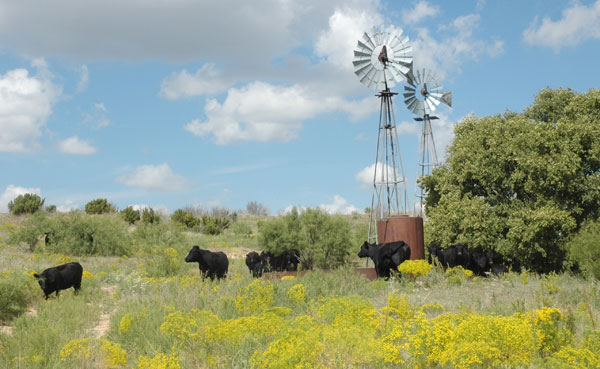Are no-input cattle a no go?
June 18, 2015

When it comes to animal breeding, the tried and true philosophy of matching the cows to the environment and the calves to the marketplace and striving to find the optimum blend of traits to maximize profits has remained unwavering. However, that has not prevented the seedstock industry from chasing extremes from time to time.
Remember the early 80’s when the industry had taken growth to the extreme and there were 8-plus frame cattle being produced? It didn’t take the industry long to recognize the error of its ways, and we entered the era that ended maximization and the instead focused on on scientific and economic-based optimization, or lowering production costs while simultaneously increasing value.
That isn’t to say that along the way the industry hasn’t gotten off track from time to time. It can also be argued that those detours or over-emphasis on a narrow range of traits is also the fastest way to move a population if we think change is needed in those traits.

70+ photos showcasing all types of cattle nutrition
Readers share their favorite photos of cattle grazing or steers bellied up to the feedbunk. See reader favorite nutrition photos here.
But have we gone too far the other direction? Like we had in the 80’s, when input costs were ignored, we’ve seen on a smaller level that the extremes on the opposite side have enjoyed some popularity. It became an ultra-low or no-input vision with no consideration of overall product. Like the other extremes, it was attempted by avid followers and now largely dismissed by the industry as a whole.
Ironically, where the extreme no-input mantra was found to be severely lacking was in tough times or drought. Management dictated strictly by a rain gauge or Mother Nature has proven to be not only high risk, but impractical in its application.
No input actually reduced management flexibility; it didn’t limit the downside, yet limited the upside. It kept technology and management from minimizing risk and maximizing profits. No-input replicates nature, which is a brutal game of survival of the fittest, tough and prone to calamity.
Instead we are seeing a return to a low-input model designed to not only help you survive tough times, but flourish in good times.
Technology, innovation, leadership, strategy, and management are an integral part of managing risk, lowering costs, and increasing value. I suppose the lesson in all these swings in genetics and philosophy is that we continually come back to the same overriding philosophy of maximizing profits by finding the optimal balance of input and output (low cost, high quality); that profitability and costs can no longer be measured by segment but rather needs to be measured in a total systems approach; and that management, innovation and technology are integral to achieving the goals of producers.
You might also like:
60 stunning photos that showcase ranch work ethics
7 tools to win the war against cattle flies
Is agriculture the bad boy in the nation's water use?
Proper timing & products needed for deworming pasture cattle
21 ATV UTV and side-by-side units for 2015
About the Author(s)
You May Also Like

.png?width=300&auto=webp&quality=80&disable=upscale)

